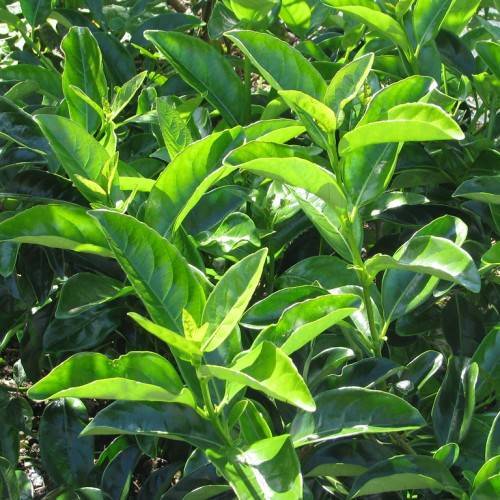
Japanese viburnum
Viburnum japonicum
Cycle:
Perennial
Watering:
Average
Hardiness Zone:
7 - 9
Flowers:
Flowers
Sun:
Full sun,part shade
Fruits:
Fruits Ready In Fall
Leaf:
Yes
Growth Rate:
Low
Maintenance:
Low
Drought Tolerant:
Yes
Invasive:
Yes
Care Level:
Medium
watering
Japanese viburnum requires consistent watering to stay healthy and happy. In the warmer months of the year, water the plant deeply and regularly once a week. Allow the soil to become dry to the touch before watering again. Adjust frequency of watering as needed; if the compost is light and sandy, you may need to water more often than once a week. In the cooler months, reduce the amount of water to encourage dormancy. Water less often but monitor the soil to make sure it does not dry completely. In general, Japanese viburnum does best when the soil is moist but not soggy.
sunlight
Japanese viburnum thrives in full sun and partial shade. However, if given too much sunlight, the foliage may be damaged. In general, Japanese viburnum needs 4-6 hours of direct sunlight daily, preferably in the morning. It should be shielded from afternoon sun, especially during the hottest part of the day (typically from 11am to 4pm). During the winter months, direct sunlight should be limited to 2-4 hours daily. With the right amount of sunlight, Japanese viburnum will produce its abundant, pendulous clusters of white flowers and glossy green leaves.
pruning
Japanese viburnum should typically be pruned in late winter or early spring, when the plant is still dormant. First, remove any dead or damaged branches by cutting them back to the main trunk. Also, if the plant is overgrown, prune selectively to thin out some of the branches which are growing inwards, away from the center of the plant, or are crowded. Make sure to cut these branches back to the main trunk or an outward-facing branch. Lastly, if desired, Japanese viburnum can be pruned to shape and contain growth into a specific size or form. Aim not to remove too much foliage, however, as this could damage or slow down the plant’s growth.
